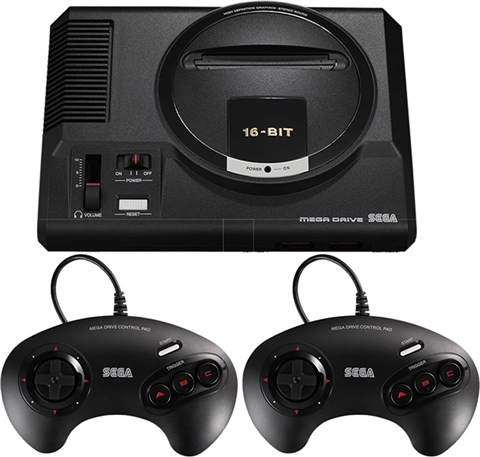SEGA Genesis Emulator for Mac OS X Sega Genesis (also known as Sega Megadrive in some areas outside North America) was released In the year, 1989, and was in competition with Nintendo who is monopolizing the home video game industry at that time. Top 10 Sega Mega Drive ROMs Sonic The Hedgehog 2 (JUE) Sonic The Hedgehog 3; Sonic The Hedgehog (JUE) Sonic And Knuckles & Sonic 3 (JUE) Streets Of Rage 2; Ultimate Mortal Kombat 3; Street Fighter 2 Special Champion Edition; Sonic & Knuckles; Mickey Mouse - Castle Of. The iconic SEGA Mega Drive console returns in a slick, miniaturized form along with two classic 3-button control pads. Made by SEGA, Mega Drive Mini delivers quality as only a 1 st party product can. Includes two classic wired 3-button control pads. SEGA's collection of Mega Drive & Genesis classics comes to a new generation! Including over 50 titles across all genres, from all-time classics like Sonic and Streets of Rage 2 to deep RPGs like the Phantasy Star series; arcade action, shooters, beat'm ups, puzzlers, old favourites and hidden gems. There is a classic title for every player to enjoy! The Sega Genesis, known as the Mega Drive in regions outside of North America, is a 16-bit video game console that was developed and sold by Sega.First released in Japan in 1988, in North America on August 14, 1989 and in PAL regions in 1990, the Genesis is Sega's third console and the successor to the Master System.The system supports a library of 713 games created both by Sega and a wide.
Connecting a remote emulator. Please wait .. |
|
|
| Game info: | ||||||||||||||||||||||||||||||||||||||||||||||||||||||||||||||||||||
|
| Similar games: | |||||
|
| Comments: |

For a brief moment in the 1990s, Sega was the king of the gaming world. The Genesis was the epitome of cool, and knocked Nintendo off the perch. Eventually, Sega's mismanagement and hubris would come to haunt them, debilitating the company with a blow that they would never recover from, leading to them bowing out of the hardware race. But for a while, Sega beat Nintendo, before Nintendo pulled back in the lead.
And that was ultimately the whole point of the legendary Mega Drive/Genesis 16-bit console. That's why it was made: with the single minded drive to beat Nintendo. That's what Hideki Sato, a former President at Sega, who led the development of their consoles, mentioned in an interview with Japanese magazine Famitsu (translated by Siliconera).
The launch of the SG-1000 next to the Famicom was extremely rough. Eventually, the Famicom would go on to monopolize the Japanese market, and Sega would be left with nothing. With the Mega Drive, Sega specifically sought to break Nintendo's iron grip hold over the industry, and beat them.
'We just wanted to make a game console that could beat Nintendo,' Sato said. 'We released our very first video game console, the SG-1000, and it sold 160,000 units. Those were huge numbers, considering Sega has only made arcade games that sold no more than several thousand units up until then. However, it stood no chance against the Family Computer, which released on the same day…
'Back then, we had some Sega employees check out department stores to see the product packaging and customer reaction, but instead what we saw were Family Computers flying off the shelves, right before our eyes. They said that it was about ten for every one who purchased the SG-1000.'
Sega Mega Drive For Mac Catalina
Sato did admit that Nintendo's victory was well earned, and that the key to their success, and to Sega's eventual success as well, was in the software.
'I thought the difference was in software,' he said. 'Honestly, the software quality wasn't that great. The reason was because the company saw video game consoles as as an extra or bonus, in a sense. We couldn't get our in-house development team to budge. We had no choice but to outsource the software, but against Nintendo's fine software, it just wasn't meant to be.'
Sega Mega Drive Games Online
In the end, of course, Sega's efforts bore fruit, and they managed to break Nintendo's monopoly—which they would never regain from that moment on, battling on two fronts against Sega and Sony first, and then Sony and Microsoft. If the Genesis/Mega Drive was specifically made to end Nintendo's monopoly, at the very least, Sega can rest assured knowing that the system managed to do just that.
The legendary system will be available as a reissued Mega Drive Classic some time next year, if you are a fan and want to relive those glory days.
